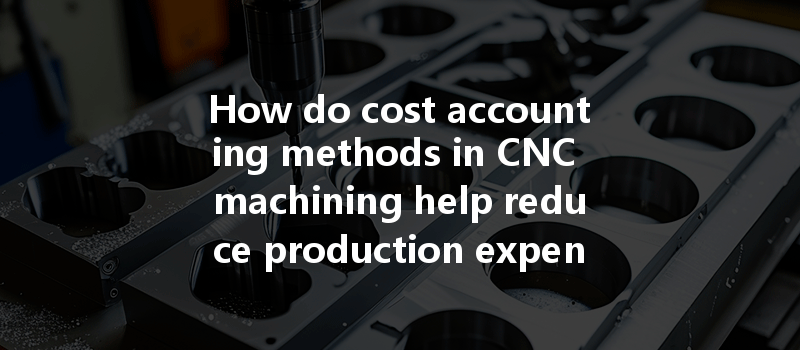In the competitive world of manufacturing, finding cost-efficient solutions while maintaining high-quality standards is crucial. CNC (Computer Numerical Control) machining stands out as a transformative process that enhances precision and efficiency in production. However, without effective cost accounting methods, companies may struggle to recognize and curb unnecessary expenses, which could ultimately erode profit margins. YL Machining aims to provide valuable insights into how the adoption of precise cost accounting methods in CNC machining not only streamlines operations but significantly reduces production expenses.
In this comprehensive blog article, we will delve deeply into various cost accounting methods tailored for CNC machining, principles of cost management, and concrete strategies for reducing expenses. Additionally, we will highlight industry best practices and offer actionable recommendations that can help manufacturers and CNC providers successfully optimize their operations.
Understanding the Basics: What is Cost Accounting?
Cost accounting is a financial management tool that focuses on capturing a company’s expenditure related to its manufacturing processes. It involves evaluating the costs associated with various business activities and production processes, providing management with relevant information that aids in decision-making.
Types of Cost Accounting Methods
There are several cost accounting methods, each offering unique frameworks for analyzing production costs. Common methods include:
Integrating Cost Accounting with CNC Machining
With CNC machining, the potential for cost savings is significant; however, realizing those savings requires a robust framework for analyzing and managing costs. By integrating cost accounting methods, manufacturers can enhance their decision-making processes in the following ways:
Understanding what drives costs in CNC machining is essential for effective management. By leveraging methods like Activity-Based Costing, YL Machining can pinpoint cost drivers specific to different machining operations, such as cutting time, tool wear, setup time, and labor expenses. Recognizing these factors allows for strategic interventions to mitigate them.
Standard costing, when combined with variance analysis, empowers CNC machining firms to evaluate production efficiency rigorously. Manufacturers can determine where deviations from expected performance occur and investigate underlying causes. This level of transparency ensures that teams can target inefficiencies, thereby driving productivity and minimizing waste.
Cost accounting methods, particularly marginal costing, can help businesses understand the true cost structure of their operations. This insight aids in establishing competitive yet profitable pricing strategies for CNC machined parts. By factoring in all direct and indirect costs, companies avoid pricing conflicts that could adversely impact their bottom line.
Implementing sound cost accounting practices equips CNC machining companies with data that can be used for budgeting and forecasting. Building a reliable budget based on historical operational costs allows management to plan for future projects based on realistic financial expectations.
Cost accounting facilitates informed decision-making by providing critical insights. Management can compare various cost scenarios, evaluate the financial impact of different production methods, or analyze the feasibility of investing in advanced CNC equipment.
Best Practices for Reducing Production Costs in CNC Machining

A well-structured cost accounting approach can drastically cut costs in CNC machining. Below are best practices that YL Machining recommends for improving cost efficiency:
Investing in the latest CNC machinery and software can significantly impact productivity. Advanced machines can run faster, have lower scrap rates, and reduce setup times. Moreover, efficient software enables better scheduling and resource allocation, thereby reducing overhead costs.
Routine maintenance minimizes equipment downtime and prolongs machinery life. By establishing a preventative maintenance program, CNC machining companies can reduce unexpected breakdowns and repair costs, ultimately leading to smoother workflows and improved efficiency.
Employing techniques such as nesting and advanced simulation software can lead to better material utilization. This not only decreases waste but also conserves raw materials, which can be a significant portion of production costs.
Providing training and resources for CNC operators and engineers increases labor efficiency. By empowering teams with an understanding of the machining process, they can identify opportunities for improvement, productivity, and cost savings.
Regularly auditing production costs can uncover new possibilities for efficiencies and savings. Performing comprehensive annual or semi-annual reviews can highlight areas where costs may have risen unnecessarily and provide insights into managing those costs more effectively.
The Role of Continuous Improvement and Lean Manufacturing
The principles of continuous improvement and lean manufacturing align closely with the goals of cost accounting in CNC machining. By adopting these methodologies, YL Machining addresses inefficiencies and aims for operational excellence.
Lean Principles and Cost Reduction
The lean manufacturing approach strives to identify and eliminate waste within the value stream, maximizing productivity while minimizing costs. Some fundamental lean principles suitable for CNC machining include:
Impact of Lean on Cost Structure
When integrated with cost accounting practices, lean principles can produce a dramatic impact on the overall cost structure. By minimizing waste—whether through excess material, overproduction, or inefficient processes—lean practices streamline operations and enhance profitability.
Cost accounting methods provide a foundation for CNC machining companies to assess, manage, and ultimately reduce production expenses effectively. By employing tailored accounting methods, identifying key cost drivers, enhancing operational efficiency, and adopting industry best practices, organizations such as YL Machining can navigate challenges and realize significant cost savings.
In today’s dynamic manufacturing landscape, where margins are often tight, the strategic application of cost accounting principles stands as a powerful tool. As manufacturers leverage data-driven insights to inform their decision-making, they reinforce their ability to remain competitive, deliver quality products, and adapt to the ever-evolving market demands. Through such initiatives, CNC machining providers not only drive down costs but also pave the way for sustained growth and success in the industry.
By adopting a rigorous approach to cost management, YL Machining and others in the CNC industry can ensure that they remain leaders in efficiency while providing exceptional value to their customers. Engaging with these principles is not merely a pathway to reducing costs but also a commitment to excellence in every aspect of manufacturing.






